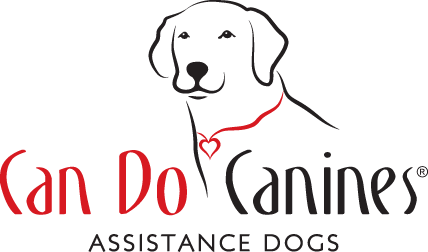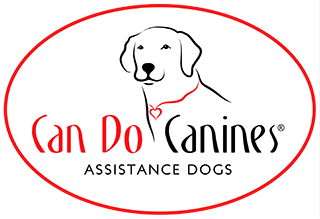- Do all airlines have the same policies for flying with an assistance dog?
- Do I need to declare that I have an assistance dog when booking my reservation?
- Are documents required to travel with an assistance dog?
- Are service fees waived when traveling with an assistance dog?
- How do airlines determine whether a dog is an assistance dog?
- What questions are carrier agents allowed to ask in order to verify that my dog is an assistance dog?
- What else should I expect when navigating check in and security with an assistance dog?
- What do I do if I encounter a problem at the airport or feel my rights are being violated?
- Can a passenger traveling with an assistance dog sit in any seat on the plane?
- Can a passenger traveling with an assistance dog request bulkhead or Economy Comfort seating?
- Can a passenger with a disability traveling with an assistance dog request an available seat next to an empty seat free of charge?
- Can my assistance dog sit in an empty seat?
- Can another passenger seat be reassigned to accommodate a passenger with a disability?
- In what circumstances can an airline exclude an assistance dog from a flight?
- Can passengers traveling with a large or heavy assistance dog be rebooked at no charge if space isn’t available?
- What constitutes disruptive or threatening behavior?
- What happens if the dog is not following the commands of its owner or is causing a disruption?
- Can an airline charge me a fee if my assistance dog damages the aircraft (i.e., the interior)?
Do all airlines have the same policies for flying with an assistance dog?
While government regulations allow for some similarities between airlines, each airline does follow different protocols. Before selecting a carrier, be sure to research the specific policies and ensure it will be the best fit for you and your dog. View the policies for individual carriers below:
Do I need to declare that I have an assistance dog when booking my reservation?
It's best to communicate to them that you are an individual with a disability and will be traveling with an assistance dog. They will place a Special Service Request (SSR (SVAN)) in the passenger itinerary or you can go online and put an SSR on your itinerary under special services/special requests.
You can also call TSA (Transportation Security Administration) Cares at 855-787-2227. They are available to assist travelers with disabilities and medical conditions. TSA recommends that passengers call 72 hours ahead of travel for information about what to expect during screening. Travelers requiring special accommodations or concerned about checkpoint screening may ask a checkpoint officer or supervisor for a Passenger Support Specialist who will provide on the spot assistance.
Are documents required to travel with an assistance dog?
Documentation requirements vary by airline, destination and your returning location's regulations. Here are a few things to keep in mind if you’re planning to fly outside of the United States with your assistance dog:
- U.S. airlines traveling to foreign countries are subject to the requirements of that foreign country regarding acceptance of assistance dogs; not all countries permit assistance dogs from other foreign countries.
- Check to ensure whether your destination country permits your dog and any other requirements to enter and exit legally.
- Some locations such as Hawaii, Great Britain and others have quarantine laws for animals, or may not permit their entry
Are service fees waived when traveling with an assistance dog?
Yes, service fees are waived when traveling with an assistance dog including seat changes or and cargo hold.
How do airlines determine whether a dog is an assistance dog?
Airlines can determine whether a dog is an assistance dog or pet by:
- The credible verbal assurances of an individual with a disability using the dog;
- Looking for physical indicators such as the presence of a harness or tags;
- Observing the behavior of the dog.
What questions are carrier agents allowed to ask in order to verify that my dog is an assistance dog?
If there is a doubt (i.e., the dog is misbehaving or not following the handler's commands) then the agents will ask questions about the dog;
- Is this your pet? (Your answer should be, "No. It is an assistance dog.")
- What tasks or functions does your dog perform for you?
- What has this service dog been trained to do for you?
- Can you describe how the dog performs this task for you?
What else should I expect when navigating check in and security with an assistance dog?
- Please tell the TSA officer that you have an assistance dog and not a pet. This way you can move to the front of the screening line since the TSA officer may need to spend more time with you.
- TSA has been trained not to distract or touch the dog (if need be, the agent will ask permission to touch the dog).
- Tell the TSA that the best way to go through the screener is as a team. But, you can go also through individually. The dog must always be on a leash.
- If the alarm goes off, additional screening will be needed, including TSA touching the dog.
- If you need to leave the secure boarding area to relieve your dog, you must undergo the full screening process again.
- At the gate; if a seat was not previously assigned, notify the gate agent that you are a passenger with a disability traveling with a service dog. Ask if a seat that you think best accommodates you is available.
- Boarding during the pre-board announcement will give you additional time to board with your service dog. However, you can board at any time.
What do I do if I encounter a problem at the airport or feel my rights are being violated?
If you believe your rights under the Air Carrier Access Act are being or have been violated, ask to speak with a Complaints Resolution Official (CRO). A CRO is the airline’s expert on disability accommodation issues. Airlines are required to make one available to you, at no cost, in person at the airport or by telephone during the times they are operating.
Can a passenger traveling with an assistance dog sit in any seat on the plane?
There are a few restrictions and rules regarding seatings:
- The team cannot occupy a seat in an exit row.
- The dog may only occupy the floor space of the owner seat (unless the neighboring seat is unoccupied).
- The dog cannot have any body part in the aisle.
Can a passenger traveling with an assistance dog request bulkhead or Economy Comfort seating?
Yes, a passenger with a disability traveling with an assistance dog may request a bulkhead (not exit row) or an Economy Comfort seat free of charge. An airline is not required to upgrade you to a different class of service to accommodate your dog.
Can a passenger with a disability traveling with an assistance dog request an available seat next to an empty seat free of charge?
Yes, a passenger with a disability traveling with an assistance dog may request an available seat next to an empty seat free of charge. However, this would be subject to air carrier approval. It is not a requirement.
Can another passenger seat be reassigned to accommodate a passenger with a disability?
Yes, a passenger with a disability traveling with an assistance dog may request a seat that is already occupied by another passenger. The air carrier will accommodate the passenger with the disability and will reassign the seat of the other passenger. A 48-hour notice is required whenever possible.
In what circumstances can an airline exclude an assistance dog from a flight?
Airlines may exclude animals that:
- Are too large or heavy to be accommodated in the cabin;
- Pose a direct threat to the health or safety of others;
- Cause a significant disruption of cabin service; or
- Are prohibited from entering a foreign country.
Can passengers traveling with a large or heavy assistance dog be rebooked at no charge if space isn’t available?
Yes, passengers traveling with a large assistance dog may be rebooked to the next available flight for no additional charge.
What constitutes disruptive or threatening behavior?
Barking or snarling, running around, and/or jumping onto other passengers, etc. without being provoked.
What happens if the dog is not following the commands of its owner or is causing a disruption?
The gate agents/CROs will do everything that they can to help the owner get the situation under control and get the dog on the flight including:
- Muzzling a dog that barks frequently.
- Allowing the customer more time to correct the behavior.
- Re-accommodate the passenger and service dog to the next available flight.
- Accept the service dog in the cargo hold (if temperature restrictions are met).
Can an airline charge me a fee if my assistance dog damages the aircraft (i.e., the interior)?
Yes, an airline is permitted to charge a maintenance fee if damage is done to the aircraft, as long it is practice to do the same for any other passenger.




